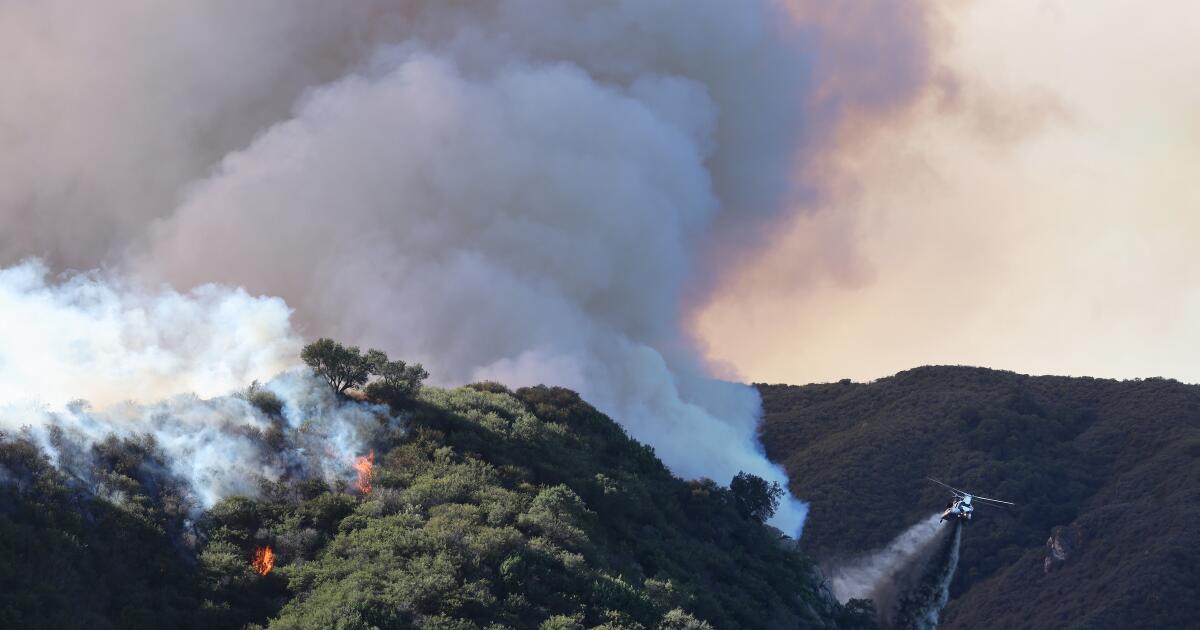The LA ‘missing women case’ goes to the fore, as the facts become difficult

The same week last month, two women were reported missing by their families from the Los Angeles Police Department. Their cases attracted attention, and soon made headlines in the country.
Volunteers helped look for the women while their families raised money through online crowdfunding to aid their search efforts.
Then came a shocking update from the police: There was no evidence of the abduction of their loved ones. Instead they are considered “voluntarily missing” or not missing at all.
In both cases, the police said they started their investigation in the form of a missing person case: to determine if the person is missing or not wanted to be found.
First, the actress of “Gossip Girl” Chanel Maya Banks was reported missing by her family on November 8, A few days later, Banks revealed that she was safe in Texas, where she confirmed her identity with the local authorities and gave a press interview. He was later removed from the California missing persons registry.
At the same time, Banks’ cousin was calling news conferences and telling the media that the police saying that Banks was in Texas was “fake news,” insisting that he had not been found. Banks later told The Times that she took the trip to get away from her family.
In the second case, 30-year-old Maui resident Hannah Kobayashi was reported missing by her family after she missed her flight to New York at Los Angeles International Airport on November 8. Kobayashi communicated with her family by text until November 11. , when his family says Kobayashi was seen leaving LAX and ended up at the Pico Metro station downtown with an unknown person.
The LAPD ultimately concluded that Kobayashi missed his flight on purpose and entered Mexico on November 12 alone and of his own free will. Officials said they would not conduct their own investigation through Mexico but would be notified if he re-enters the country. As of Wednesday, he was still listed as missing.
“So far, the investigation has not revealed any evidence that Kobayashi is being trafficked or a victim of foul play,” LAPD Chief Jim McDonnell said during Monday’s press conference. “He is also not a suspect in any criminal activity.”
Kobayashi’s family refuted the LAPD’s assertion that he went missing voluntarily and missed his flight on purpose. They urged the police and the public to continue the search.
“The ‘story’ about Hannah that is being circulated online, that is not the Hannah we know and love,” the family’s statement read. “We do not believe that Hannah would willingly, in her right mind, have intentionally inflicted this unimaginable pain on her loved ones.”
LAPD Deputy Chief Alan Hamilton, who oversaw the investigation of Banks and Kobayashi, told The Times that when someone is reported missing, detectives first try to determine whether the person is missing or voluntarily separated.
If someone is in danger, has been victimized by identified suspects or is a child or adult with reduced status, their cases may be processed more quickly, Hamilton said.
“A mature adult who doesn’t have mental health issues or substance abuse issues or other complex issues would not be considered a missing person at risk,” he added.
It is “unusual” for an elderly person to be reported missing by family members, only to later reveal that they voluntarily decided to contact friends, family or acquaintances, according to Hamilton.
In those cases, he said, the detectives confirm the identity of the person in question and get confirmation that everything is fine. They then forward that message to the actual person who reported it missing.
In Banks’s case, he said, he explained to authorities why he went to Texas and made it “clear” that he did not want further contact from family members or law enforcement.
“I think part of the issue with these two cases is that there was a lot of information that was not tested or verified,” Hamilton said. “We don’t know who put it there and that could interfere with the investigation.”
For example, he explained, if someone writes on the Internet that a woman is indeed being trafficked and is later seen in public with a man, others may think that she is the trafficker.
“They may take action against that man who is in a public position. Isn’t that so dangerous?” he said.
In Kobayashi’s case, Hamilton rejected the relatives’ suggestion that the case was not a case, saying the department spent “too much money” out of concern that he was at risk.
“They say he has a clear mind and no mental health issues, so he can make his own decisions,” Kobayashi’s sister, Sydni, told The Times in an interview last week. “It is not considered a serious threat by the LAPD.”
McDonnell said at a press conference Monday that Kobayashi was caught on video surveillance using money and his passport to buy a bus ticket to Union Station. He then arrived at the San Ysidro border, where he entered Mexico alone with his luggage.
“You’ve got someone going on their own for four days without stress,” Hamilton said. “One of the important things in identifying that a person is voluntarily missing is that people are able to live their lives and if we look in different ways that they are not forced or oppressed or oppressed by power, we will not continue to investigate. people besides that.”
When it comes to missing person cases, Hamilton’s advice is that if you see someone you think has been reported missing, notify the LAPD or the appropriate area so detectives can complete the investigation, talk to the person reported missing and confirm what happened.
“What we don’t want is for people to take information that hasn’t been tested and act on it and there will be a disaster.”
Source link


